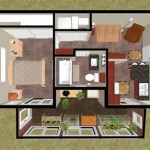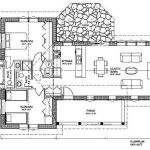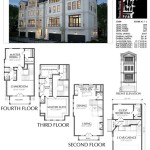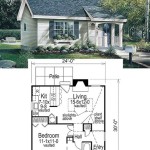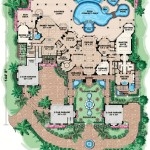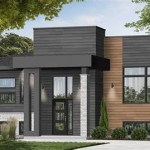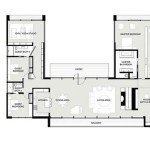Frank Lloyd Wright house plans are architectural blueprints that embody the unique design principles and philosophies of renowned American architect Frank Lloyd Wright. These plans serve as detailed guidelines for constructing homes that seamlessly blend with their natural surroundings, emphasizing organic forms, open floor plans, and ample natural light.
Wright’s groundbreaking designs, exemplified by iconic structures like Fallingwater and the Guggenheim Museum, have left an ind.lible mark on the world of architecture. His houses are not merely shelters but extensions of the environment, meticulously crafted to enhance the.
In this article, we delve into the fascinating world of Frank Lloyd Wright house plans, exploring their key characteristics, design philosophies, and the legacy they continue to inspire in modern architecture.
Key Characteristics of Frank Lloyd Wright House Plans:
- Organic Forms
- Open Floor Plans
- Natural Materials
- Indoor-Outdoor Connection
- Geometric Patterns
- Built-In Furniture
- Emphasis on Natural Light
- Integration with Nature
- Timeless Design
These principles continue to influence modern architecture, inspiring a harmonious relationship between human and the natural world.
Organic Forms
Organic forms are a defining characteristic of Frank Lloyd Wright’s architectural style. Inspired by nature, Wright believed that buildings should harmonize with their surroundings, echoing the curves, lines, and textures found in the natural world. His designs often incorporated rounded corners, flowing lines, and irregular shapes, creating a sense of unity between the structure and its environment.
One of the most striking examples of Wright’s organic approach is the iconic Fallingwater house in Pennsylvania. Perched dramatically over a waterfall, the house appears to cascade down the hillside, its cantilevered terraces and curved balconies mimicking the contours of the natural rock formations. The fluid lines of the structure blend seamlessly with the surrounding landscape, creating a harmonious dialogue between architecture and nature.
Wright’s organic forms extended beyond the exterior of his houses. Inside, he incorporated curved walls, rounded fireplaces, and built-in furniture that flowed together in a continuous spatial experience. These organic elements not only enhanced the aesthetic appeal of his interiors but also promoted a sense of fluidity and interconnectedness, blurring the boundaries between different spaces.
The use of organic forms in Frank Lloyd Wright’s house plans was not merely an aesthetic choice; it was a reflection of his belief in the interconnectedness of all living things. By integrating natural elements into his designs, Wright sought to create spaces that fostered a deep connection between humans and their surroundings, promoting a sense of well-being and harmony with the natural world.
Open Floor Plans
Open floor plans are a hallmark of Frank Lloyd Wright’s architectural designs. Breaking away from the traditional compartmentalization of rooms, Wright believed in creating fluid, interconnected spaces that allowed for a seamless flow of movement and natural light. His open floor plans fostered a sense of spaciousness, openness, and communal living.
Wright’s open floor plans often featured central gathering areas, such as living rooms or dining rooms, that served as the focal point of the home. These spaces were visually connected to other areas of the house, such as the kitchen, library, or study, through the use of open archways, sliding doors, or built-in dividers. This interconnectedness promoted a sense of community and togetherness, encouraging family members to interact and engage with one another.
In addition to their social benefits, open floor plans also allowed for a greater connection with the outdoors. Wright’s designs often incorporated large windows and glass doors that brought the outside in, blurring the boundaries between interior and exterior spaces. This connection to nature not only enhanced the aesthetic appeal of his homes but also created a healthier and more inviting living environment.
Open floor plans also facilitated a more efficient use of space. By eliminating unnecessary walls and partitions, Wright was able to create more spacious and functional living areas. This efficient use of space was particularly beneficial in smaller homes, where every square foot was precious. Overall, Frank Lloyd Wright’s open floor plans revolutionized the way people lived and interacted within their homes, promoting a sense of community, connection to nature, and efficient use of space.
Natural Materials
Frank Lloyd Wright believed in using natural materials to create a harmonious relationship between his buildings and their surroundings. He incorporated wood, stone, brick, and glass into his designs, celebrating the beauty and texture of these organic elements.
Wood was a primary material in Wright’s houses, both for its structural and aesthetic qualities. He used wood for framing, siding, roofing, and interior paneling, often leaving it unstained or finished with natural oils to showcase its rich grain and color variations. Notable examples include the Robie House in Chicago, where horizontal bands of wood siding create a strong visual connection to the surrounding landscape, and the Taliesin West complex in Arizona, where organic wood beams and columns blend seamlessly with the desert environment.
Stone was another favored material, particularly for foundations, fireplaces, and exterior walls. Wright appreciated the durability and permanence of stone, as well as its ability to ground his buildings in their natural settings. Fallingwater, one of Wright’s most iconic designs, features massive stone walls that anchor the house to the rocky hillside, creating a sense of solidity and connection to the earth.
Brick was also commonly used by Wright, especially in his Prairie style homes. The warm, earthy tones of brick complemented the natural surroundings and provided a sense of warmth and coziness. The Dana-Thomas House in Springfield, Illinois, showcases Wright’s innovative use of brick, with intricate geometric patterns and bands of windows that create a dynamic interplay of light and shadow.
Wright’s use of natural materials extended beyond structural elements. He incorporated natural materials into decorative details, such as stained glass windows, ceramic tiles, and textiles woven from organic fibers. These elements added a touch of warmth and individuality to his homes, creating spaces that were both aesthetically pleasing and deeply connected to the natural world.
Indoor-Outdoor Connection
Frank Lloyd Wright believed in blurring the boundaries between the interior and exterior of his homes. He designed houses that seamlessly connected with their natural surroundings, creating a harmonious flow between indoor and outdoor spaces.
- Expansive Windows and Glass Doors:
Wright incorporated large windows and glass doors into his designs, allowing for ample natural light and panoramic views of the surrounding landscape. These expansive glazed openings created a sense of transparency, bringing the outside in and extending the living space beyond the physical walls of the house. The Robie House in Chicago is a prime example, with its floor-to-ceiling windows that offer stunning views of the surrounding prairie.
- Terraces and Balconies:
Wright often extended the living space outdoors by incorporating terraces and balconies into his designs. These outdoor areas provided seamless transitions between the interior and exterior, allowing for al fresco dining, relaxation, and enjoyment of the natural surroundings. The Taliesin West complex in Arizona features numerous terraces that overlook the desert landscape, creating a strong connection between the built environment and the natural beauty of the site.
- Courtyards and Atriums:
Courtyards and atriums were another way Wright brought the outdoors into his homes. These enclosed outdoor spaces provided natural light and ventilation while creating a private and serene oasis within the house. The Dana-Thomas House in Springfield, Illinois, features a central courtyard that serves as a focal point of the home, providing a tranquil retreat from the busy city surroundings.
- Organic Forms and Natural Materials:
Wright’s use of organic forms and natural materials further enhanced the indoor-outdoor connection in his homes. The curved walls, rounded corners, and flowing lines of his designs echoed the forms found in nature, creating a sense of harmony between the interior and exterior spaces. The use of natural materials, such as wood and stone, brought the warmth and texture of the outdoors into the home, fostering a deep connection with the surrounding environment.
By seamlessly integrating indoor and outdoor spaces, Frank Lloyd Wright created homes that celebrated the beauty of nature and promoted a harmonious relationship between humans and their surroundings. His designs continue to inspire architects and homeowners alike, setting a precedent for sustainable and environmentally conscious architecture.
Geometric Patterns
Frank Lloyd Wright’s designs were characterized by a masterful use of geometric patterns, which added visual interest, rhythm, and harmony to his architectural creations.
Squares and Rectangles: Wright frequently employed squares and rectangles as the shapes in his floor plans and elevations. These geometric forms provided a sense of order and stability, while also allowing for flexibility and variation in. The Robie House in Chicago is a prime example, with its orthogonal grid system that creates a strong visual rhythm and a harmonious relationship between the different spaces of the house.
Triangles and Hexagons: Wright also incorporated triangles and hexagons into his designs, often in combination with squares and rectangles. These more dynamic shapes added visual interest and complexity, breaking up the monotony of rectilinear forms. The Hollyhock House in Los Angeles features a striking hexagonal tower that serves as a focal point of the design, while the Ennis House in Los Angeles showcases intricate triangular patterns in its decorative elements.
Circles and Curves: While Wright primarily used straight lines and geometric forms, he also incorporated circles and curves into his designs to create a sense of balance and fluidity. Rounded corners, curved walls, and circular windows can be found in many of his houses, adding a touch of organic softness to the overall geometric composition. The Guggenheim Museum in New York City is a prime example of Wright’s innovative use of curves, with its iconic spiral ramp that forms a continuous, flowing space.
Wright’s geometric patterns extended beyond the exterior of his homes. Inside, he used geometric motifs in flooring, textiles, furniture, and decorative details. These patterns added visual interest and unity to the interior spaces, creating a harmonious and aesthetically pleasing environment. The Dana-Thomas House in Springfield, Illinois, features a geometric stained glass window that depicts stylized tulips, while the Taliesin West complex in Arizona showcases intricate geometric designs in its textiles and carpets.
Built-In Furniture
Frank Lloyd Wright’s designs often incorporated built-in furniture, seamlessly integrating furniture and architecture to create harmonious and functional living spaces.
- Space Optimization:
Built-in furniture allowed Wright to maximize space and create more efficient floor plans, especially in smaller homes. By incorporating furniture into the design of the house, he eliminated the need for freestanding pieces, creating a sense of spaciousness and order.
- Aesthetic Unity:
Built-in furniture contributed to the overall aesthetic unity of Wright’s homes. Designed in conjunction with the architecture, these pieces complemented the lines and forms of the house, creating a cohesive and visually pleasing environment. The furniture became an integral part of the design, enhancing the overall architectural concept.
- Functionality and Comfort:
Wright’s built-in furniture was not merely decorative; it was designed to be highly functional and comfortable. He carefully considered the ergonomics and proportions of each piece to ensure that it met the needs of the users. Built-in seating, for example, was often designed to provide ample support and comfort, while built-in storage solutions maximized space utilization.
- Organic Forms and Natural Materials:
In line with his organic design principles, Wright’s built-in furniture often featured curved lines and natural materials. These elements echoed the forms and textures found in nature, creating a sense of harmony between the furniture and its surroundings. Wood was a commonly used material for built-in furniture, adding warmth and a connection to the natural world.
Frank Lloyd Wright’s use of built-in furniture was a testament to his holistic approach to architecture. By integrating furniture into the design of his homes, he created spaces that were not only visually appealing but also highly functional and comfortable. His built-in furniture designs continue to inspire modern architects and designers, demonstrating the timeless appeal of his architectural vision.
Emphasis on Natural Light
Frank Lloyd Wright believed that natural light was essential for creating healthy and harmonious living spaces. He meticulously designed his houses to maximize the use of natural light, incorporating large windows, skylights, and courtyards to bring the outdoors in.
Large Windows and Glass Doors: Wright’s designs often featured expansive windows and glass doors that allowed ample natural light to flood into the interior spaces. These large glazed openings not only provided stunning views of the surrounding landscape but also created a sense of transparency and connection with the outdoors. The Robie House in Chicago is a prime example of Wright’s use of large windows, with its floor-to-ceiling windows that offer panoramic views of the surrounding prairie.
Skylights and Clerestory Windows: In addition to large windows, Wright also incorporated skylights and clerestory windows into his designs to introduce natural light from above. These openings allowed light to penetrate deep into the interior of the house, illuminating even the darkest corners. The Dana-Thomas House in Springfield, Illinois, features a central skylight that floods the living space with natural light, creating a bright and airy atmosphere.
Courtyards and Atriums: Wright’s use of courtyards and atriums was another way to bring natural light into the heart of his homes. These enclosed outdoor spaces provided natural light and ventilation while creating a private and serene oasis within the house. The Taliesin West complex in Arizona features numerous courtyards that overlook the desert landscape, allowing natural light to penetrate deep into the living spaces.
By incorporating these design elements, Frank Lloyd Wright created homes that were flooded with natural light, promoting a sense of well-being and a deep connection with the outdoors. His emphasis on natural light continues to influence modern architecture, inspiring architects to design spaces that are both sustainable and uplifting.
Integration with Nature
Frank Lloyd Wright believed that architecture should be in harmony with its natural surroundings. He designed his houses to blend seamlessly with their landscapes, creating a deep connection between the built environment and the natural world.
- Organic Forms:
Wright’s designs often mirrored the organic forms found in nature. He used curved lines, rounded corners, and irregular shapes to create structures that echoed the forms of trees, rocks, and other natural elements. The Fallingwater house in Pennsylvania is a prime example of Wright’s organic approach, with its cantilevered terraces and curved balconies that seem to flow out of the hillside.
- Natural Materials:
Wright incorporated natural materials, such as wood, stone, and brick, into his designs to further connect his houses with their surroundings. These materials brought the warmth and texture of the outdoors into the interior spaces, creating a sense of unity between the built and natural environments. The Robie House in Chicago features horizontal bands of wood siding that blend harmoniously with the surrounding prairie landscape.
- Indoor-Outdoor Connection:
Wright’s houses were designed to seamlessly connect the interior and exterior spaces. He used large windows, glass doors, and outdoor terraces to create a fluid transition between the two. This connection allowed occupants to enjoy the beauty of the natural surroundings from within the comfort of their homes. The Dana-Thomas House in Springfield, Illinois, features a central courtyard that provides a private outdoor space while also bringing natural light into the interior of the house.
- Site Orientation:
Wright carefully considered the orientation of his houses on their sites to maximize their connection with nature. He positioned windows and outdoor spaces to take advantage of natural light, views, and prevailing breezes. The Taliesin West complex in Arizona is situated on a hillside, with its buildings arranged to capture the stunning desert views and take advantage of the natural ventilation.
By integrating his houses with nature, Frank Lloyd Wright created spaces that were not only aesthetically pleasing but also deeply connected to their surroundings. His designs continue to inspire architects and homeowners alike, demonstrating the importance of harmonizing the built environment with the natural world.
Timeless Design
Frank Lloyd Wright’s house plans are renowned for their timeless design, which continues to inspire architects and homeowners even today. His designs transcended the boundaries of time, creating structures that remain relevant and aesthetically pleasing decades after their creation.
- Simplicity and Functionality:
Wright’s designs were characterized by their simplicity and functionality. He believed that form should follow function, and his houses were designed to meet the needs of the occupants while maintaining a clean and uncluttered aesthetic. The Robie House in Chicago exemplifies this principle, with its open floor plan and emphasis on natural light, creating a spacious and functional living environment.
- Organic Forms and Natural Materials:
Wright incorporated organic forms and natural materials into his designs, blurring the boundaries between the built environment and nature. His houses often featured curved lines, rounded corners, and materials such as wood, stone, and brick, which gave them a sense of warmth and connection to the surrounding landscape. The Fallingwater house in Pennsylvania is a stunning example, with its cantilevered terraces and stone walls that seem to emerge from the rocky hillside.
- Integration with Nature:
Wright believed that architecture should harmonize with its surroundings, and his houses were designed to complement and enhance their natural settings. He carefully considered the orientation of his buildings to take advantage of natural light and views, and incorporated outdoor spaces such as terraces and courtyards to seamlessly connect the interior and exterior. The Dana-Thomas House in Springfield, Illinois, features a central courtyard that brings natural light into the home while providing a private outdoor retreat.
- Attention to Detail:
Wright’s plans were meticulously detailed, ensuring that every aspect of the design was carefully considered. He paid close attention to the smallest details, from the placement of windows and doors to the design of built-in furniture and decorative elements. This attention to detail resulted in houses that were not only visually stunning but also highly functional and durable. The Guggenheim Museum in New York City showcases Wright’s mastery of detail, with its iconic spiral ramp that creates a continuous and visually captivating space.
Frank Lloyd Wright’s timeless design principles continue to influence modern architecture, inspiring architects to create spaces that are both aesthetically pleasing and enduring. His house plans have stood the test of time, remaining relevant and admired for their simplicity, functionality, organic forms, integration with nature, and meticulous attention to detail.










Related Posts

